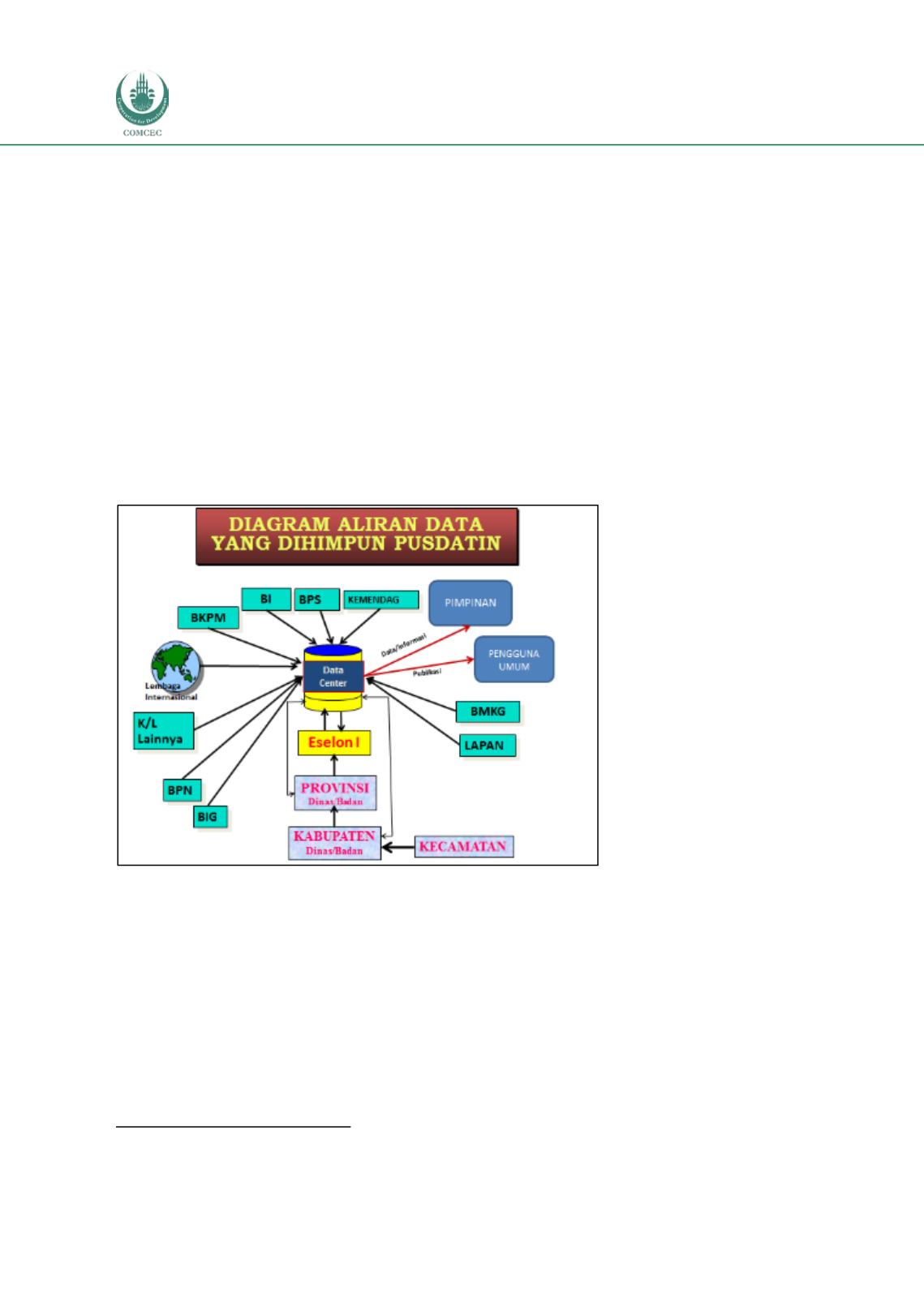

Improving Agricultural Market Performance:
Developing Agricultural Market Information Systems
80
•
Food crops such as rice, maize, soybeans, cassava, peanuts;
•
Horticultural produce including onions, chillies, carrots and pineapples;
•
Estate commodities like sugar and rubber; and
•
Livestock products such as beef, poultry meat, eggs and milk.
Usually, the prices are reported in Rupia
h 22per kilogram (Rp/kg) except in the case of products
such as milk (Rp/litre) or eggs (Rp/piec
e).In most cases, there is no quality differentiation in
terms of prices reported (i.e. one price for the commodity without an indication of the grade).
However, for rice, which is quite important in Indonesia’s food systemand agricultural economy,
different prices are reported for different grades, for example for medium or premium quality.
Figure 31 provides an overview of the flow of primary data through to receipts of the processed
information.
Figure 31: Diagram of Data Flow in Pusdatin
(Center for Agricultural Data And Information System
s)
Source: Nugroho (2016)
Dissemination of the information generated is through the dedicated website of the MoA. Figure
32 provides an overview of the data flows between the district and provincial staff and the
Centre and its dissemination channels, which include the BPS as well as international partners
such as the UN Food and Agriculture Organisation (FAO) and the
Association of Southeast Asian
Nations (
ASEAN).
The MoA publishes “Daily Reports on Agricultural Commodity Prices” on the section of its
website entitled
“Laporan harian harga komoditas pertanian
”
(see Figure 32). The price data is
sent by SMS by agricultural staff from districts or provincial headquarters to the MoA, where
they are automatically entered into a database and made available on the website. Receipt of the
22
Indonesia’s local currency.


















